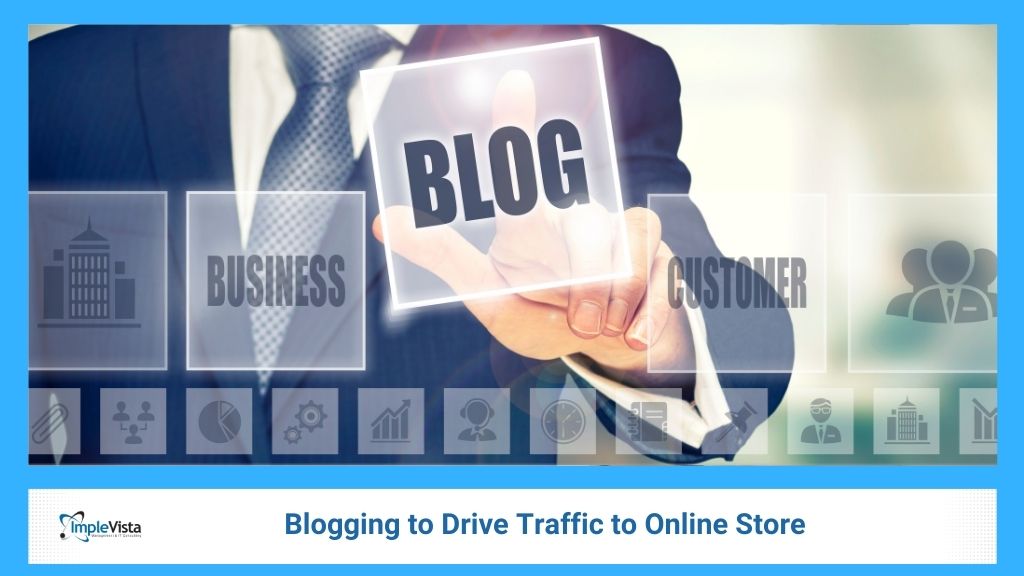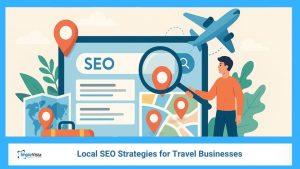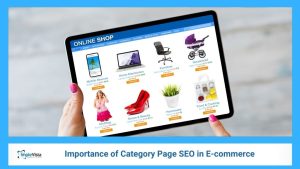Blogging for Ecommerce: How to Drive Traffic to Your Online Store
Welcome to Implevista Digital, your trusted partner in navigating Bangladesh’s ever-evolving digital landscape. Today, we’re diving deep into a powerful tool that can significantly boost your online store’s traffic: blogging. Let’s explore how blogging for eCommerce can transform your online store.
Why Blogging Matters for Your Online Store
In today’s digital world, simply having an online store isn’t enough. You need to attract customers, engage them, and build trust. That’s where blogging for ecommerce comes in. It’s not just about writing articles; it’s about creating valuable content that resonates with your target audience, drives traffic to your website, and ultimately, increases sales.
Understanding the Power of Blogging for Ecommerce
What is Blogging for Ecommerce?
Blogging for ecommerce means creating and publishing blog content that is directly related to your products or services. It’s a key part of ecommerce content marketing. Think of it as a way to share your expertise, provide helpful information, and connect with your customers on a deeper level.
- Builds Trust and Authority: Sharing valuable insights establishes you as an expert in your field.
- Drives Organic Traffic: Well-optimized blog posts can rank high in search engine results, attracting potential customers.
- Increases Customer Engagement: Engaging content encourages interaction, comments, and shares.
- Supports SEO Efforts: Regular blogging provides fresh content, which search engines love.
Why Blogging is Essential for eCommerce Success?
Blogging is more than just writing articles—it’s a powerful marketing tool that can:
✔ Improve your search engine rankings (SEO)
✔ Drive organic traffic to your online store
✔ Build trust and authority in your niche
✔ Provide valuable content that engages potential customers
✔ Encourage social sharing and backlink opportunities
By implementing strategic blogging for eCommerce plans, you can turn readers into paying customers.
How to Create an Effective Blogging Strategy for Your Online Store?
Creating a blogging strategy for your eCommerce store involves careful planning and execution. Simply publishing content isn’t enough—you need a well-thought-out approach that aligns with your business goals and audience interests. Here’s how you can craft an effective blogging for eCommerce strategy:
- Identify Your Target Audience
Understanding your target audience is the first step to creating engaging eCommerce content marketing. Your blog should address their pain points, answer their questions, and provide solutions that align with their interests. Ask yourself:
✔ Who are my ideal customers?
✔ What problems do they face?
✔ What type of content do they consume?
✔ Where do they spend time online?
✔ What language and tone should I use to resonate with them?
Once you have a clear understanding of your audience, tailor your blog content to match their needs and preferences.
- Perform Keyword Research
A well-optimized blog needs the right keywords. Keywords help search engines understand your content and make it more discoverable by potential customers. Use tools like Google Keyword Planner, Ahrefs, or SEMrush to find:
✔Primary Keyword: Blogging for eCommerce
✔Secondary Keyword: eCommerce content marketing
✔Long-tail Keywords: How to drive traffic to your online store, best blogging tips for eCommerce, how to write blogs that convert
When selecting keywords, prioritize search volume, competition level, and user intent. Incorporate them naturally into your blog titles, subheadings, and body text.
- Plan High-Quality, SEO-Friendly Content
Producing high-quality, well-optimized content is crucial for success. Follow these content writing best practices:
✔ Use compelling headlines that include relevant keywords and grab attention.
✔ Write engaging introductions to hook readers and encourage them to continue reading.
✔ Break up text with short paragraphs, bullet points, and subheadings for better readability.
✔ Include relevant images, infographics, and videos with keyword-rich alt text to enhance user experience and SEO.
✔ Ensure a keyword density of 3% for primary keywords to avoid keyword stuffing while maintaining relevance.
✔ Incorporate storytelling, data, and expert insights to add credibility and depth to your content.
By following these steps, you can develop a powerful blog strategy that attracts traffic, engages readers, and ultimately increases sales.
Types of Blog Content That Drive Traffic
- How-To Guides and Tutorials
People love step-by-step guides! Example: How to Choose the Best Payment Gateway for Your eCommerce Store.
- List articles and Product Comparisons
Example: 10 Best Shopify Apps to Increase Sales in 2024.
- Customer Success Stories and Case Studies
Show how your product has helped real customers. This builds credibility.
- Seasonal and Trend-Based Content
Example: Top Holiday Marketing Strategies for eCommerce Stores in 2024.
- Industry News and Updates
Keep your audience informed of the latest trends.
Optimizing Blog Content for SEO
- On-Page SEO Optimization
✔ Use primary and secondary keywords naturally in titles, subheadings, and content
✔ Optimize meta title and description (Primary Keyword: Blogging for eCommerce)
✔ Use internal links to relevant content on your website
✔ Add external links to authoritative sources
✔ Ensure mobile-friendliness and fast loading speed
- Technical SEO Best Practices
✔ Use structured data for better SERP visibility
✔ Optimize images with alt text
✔ Implement an easy-to-navigate blog structure
Promoting Your Blog to Maximize Traffic
Share blogs on Facebook, Instagram, LinkedIn, Pinterest, and Twitter. Use engaging captions and relevant hashtags.
Send blog updates to your subscribers with compelling subject lines to increase open rates.
- Influencer Outreach & Guest Blogging
Collaborate with influencers in your niche to expand your reach.
- Paid Advertising (PPC & Social Ads)
Run targeted Google Ads or Facebook Ads to promote high-performing blogs.
- Repurpose Blog Content
Convert blog posts into infographics, podcasts, videos, and social media posts.
Measuring Blog Performance and Improving Results
Tracking and analyzing your blog’s performance is crucial for continuous improvement. Use tools like Google Analytics, Google Search Console, and SEMrush to measure key metrics such as:
- Organic traffic: Check how many visitors are reaching your blog through search engines.
- Bounce rate & dwell time: Understand how long users stay on your page and whether they engage with your content.
- Keyword performance: Identify which keywords are driving the most traffic and optimize your content accordingly.
- Conversion rates: Analyze how many blog readers take desired actions, such as signing up for a newsletter or making a purchase.
- Social shares & backlinks: Monitor engagement levels and the number of external sites linking to your content.
Use these insights to refine your blogging strategy. Update old posts with fresh data, improve internal linking, experiment with different CTAs, and optimize content based on user behavior trends.
FAQs :Blogging for Ecommerce
How long does it take for a blog to drive traffic to an online store?
It typically takes 3 to 6 months to see significant traffic improvements, depending on SEO efforts and content quality.
What are the best SEO practices for eCommerce blogging?
Use keyword-rich titles, internal and external links, optimized images, and mobile-friendly layouts to improve rankings.
Should I focus on trending topics or evergreen content?
A mix of both is ideal! Trending topics drive short-term traffic, while evergreen content brings consistent long-term visitors.
How do I convert blog readers into customers?
Use strong CTAs, product recommendations, email sign-ups, and engaging storytelling to drive conversions.
What are the common mistakes to avoid in eCommerce blogging?
Avoid keyword stuffing, inconsistent posting, weak CTAs, and poor formatting, as they negatively impact SEO and engagement.
How can I measure my blog’s success?
Track organic traffic, bounce rate, dwell time, keyword rankings, and conversion rates using tools like Google Analytics.
Is guest blogging beneficial for my eCommerce blog?
Yes! Guest blogging helps build backlinks, reach new audiences, and boost domain authority for better rankings.
What are the best ways to repurpose blog content?
Convert blogs into social media posts, video contents, infographics, newsletters, and podcasts for maximum reach.
How important is blog design and readability?
Extremely important! Use clear headings, bullet points, short paragraphs, and visuals to enhance user experience and engagement.
Can I monetize my eCommerce blog beyond product sales?
Yes! You can earn through digital marketing specially from the category affiliate marketing, sponsored posts, and advertising while promoting your store.
Blogging for eCommerce is one of the most powerful strategies to drive organic traffic, engage potential customers, and increase sales. By focusing on SEO optimization, high-quality content, and effective promotion, you can turn your blog into a traffic-generating machine for your online store. Start implementing these strategies today, and watch your eCommerce store thrive!
📢 Need help with content marketing? Contact Implevista Digital today for expert eCommerce blogging services!









